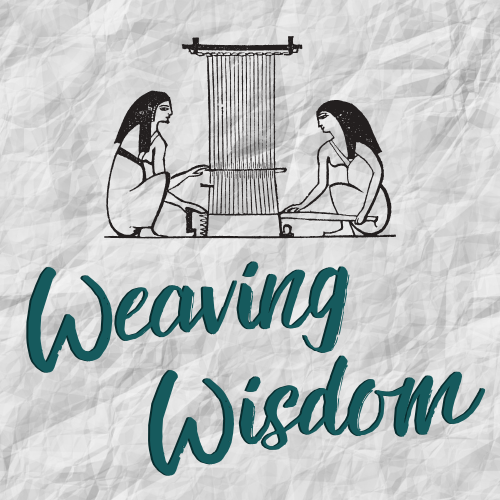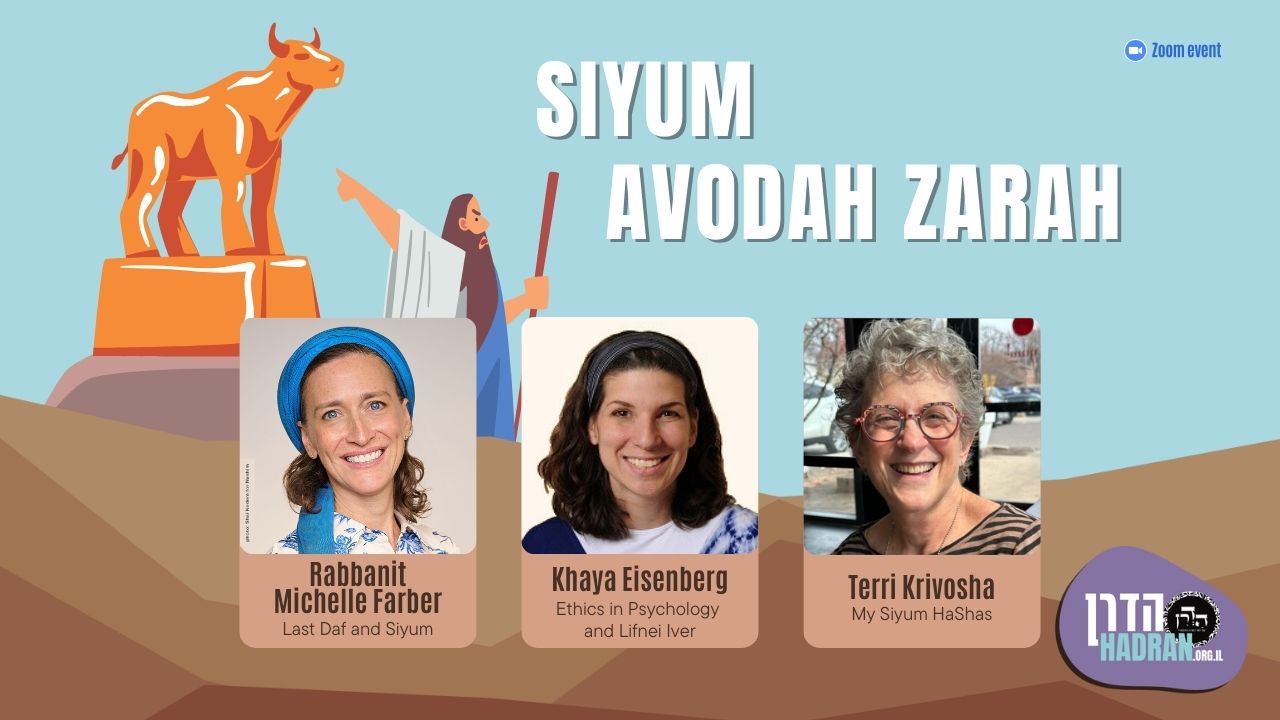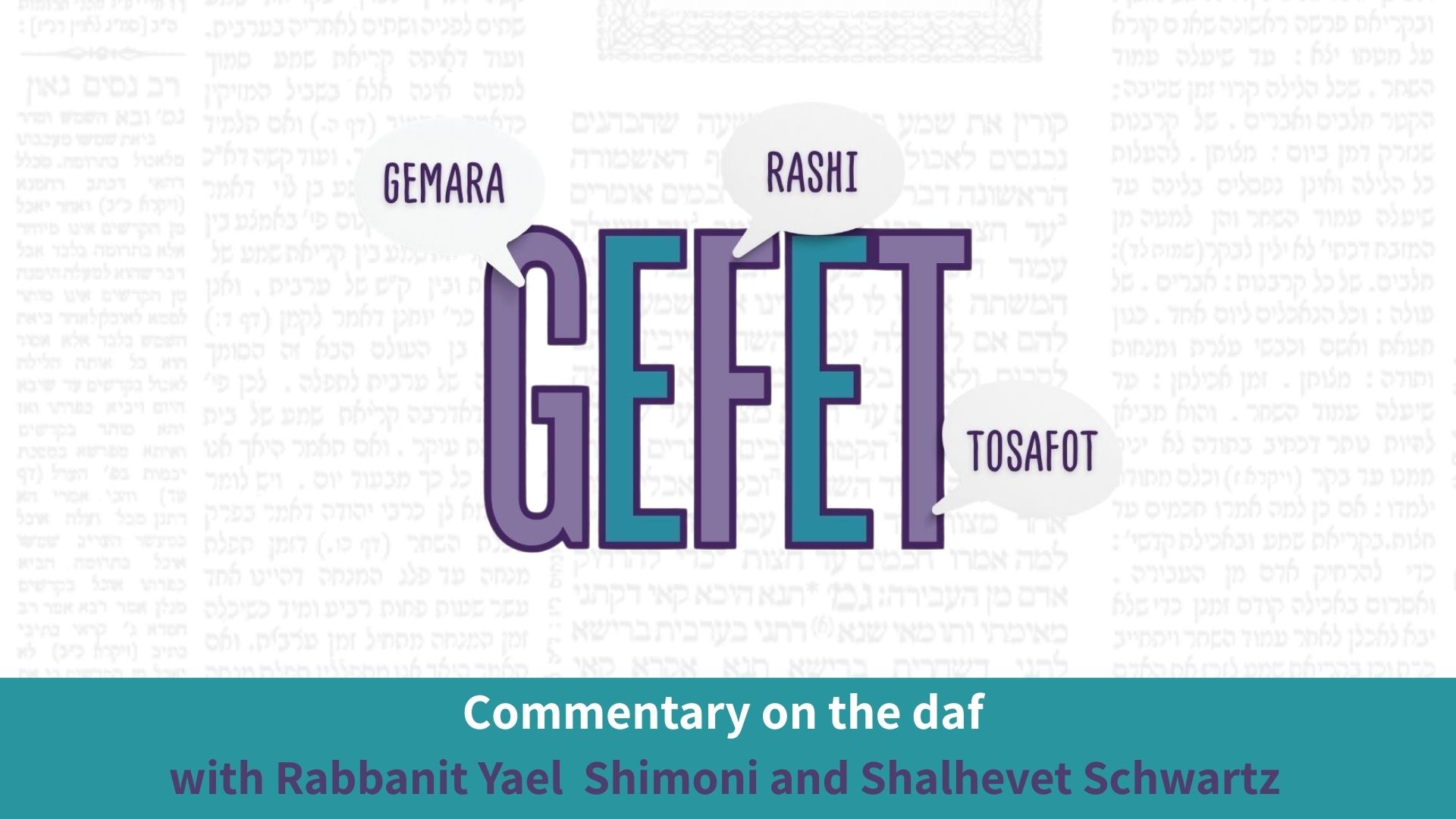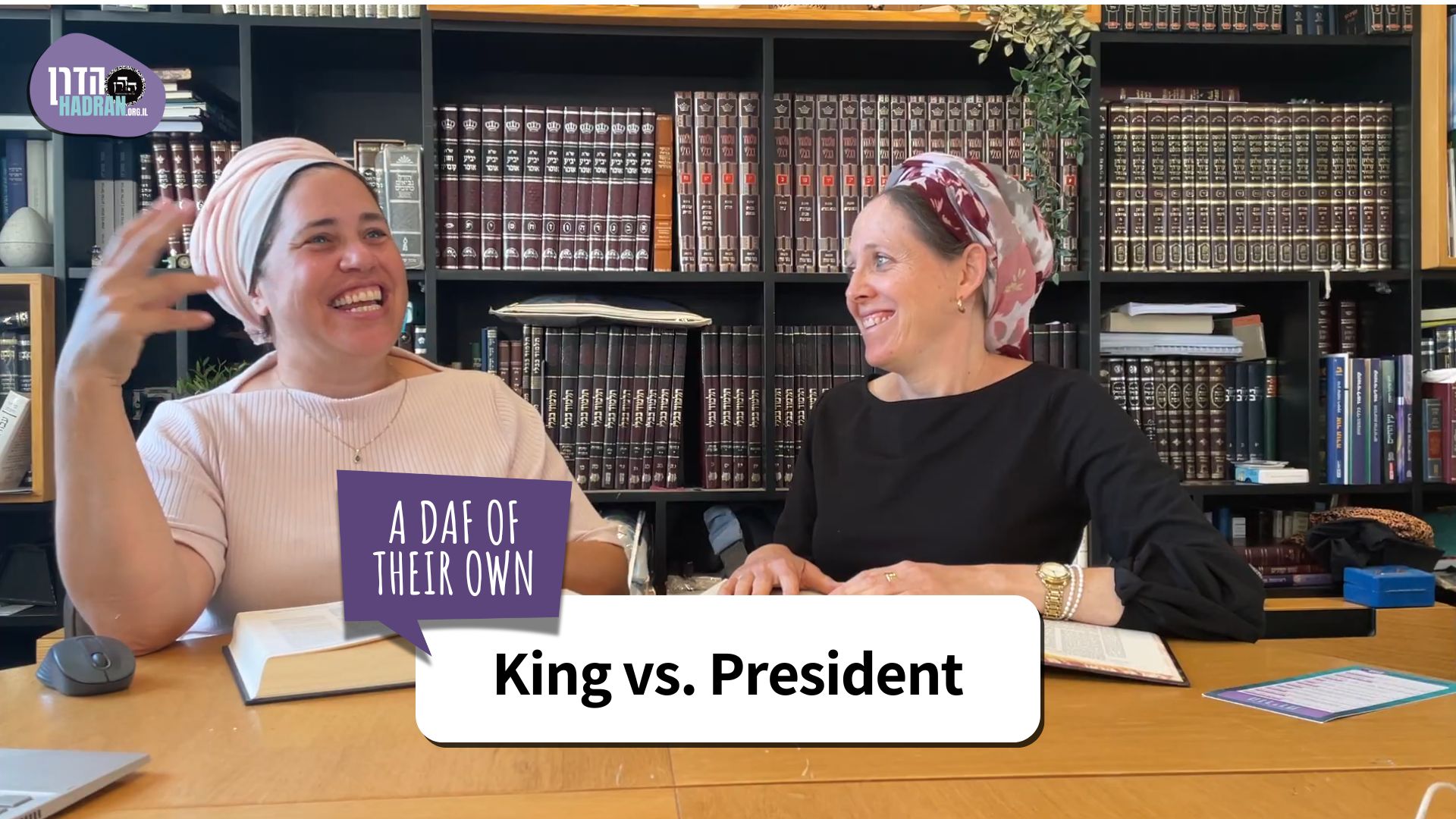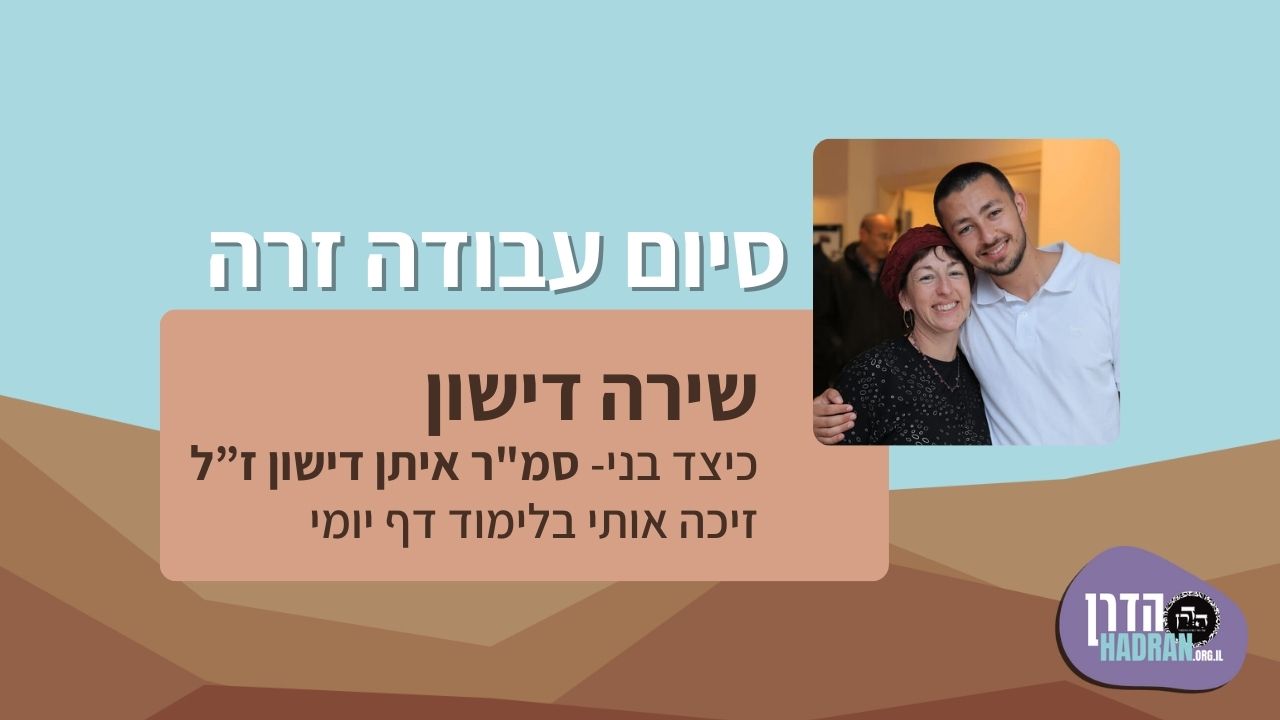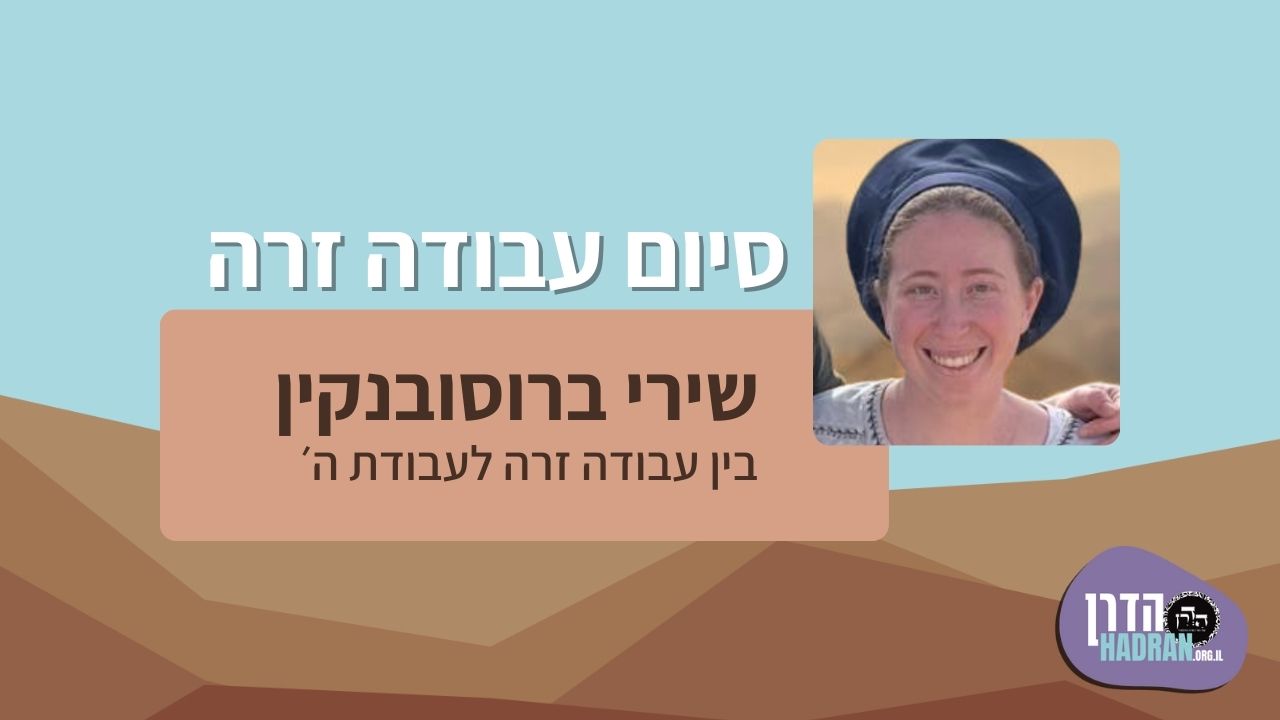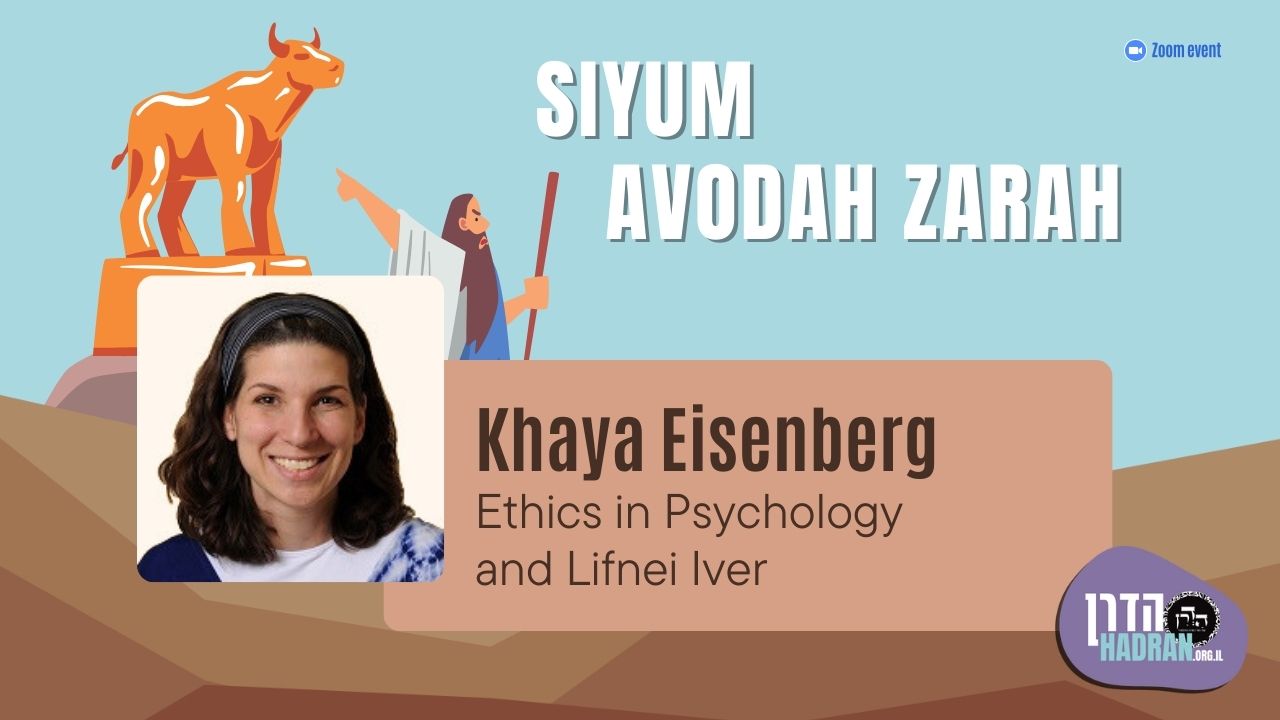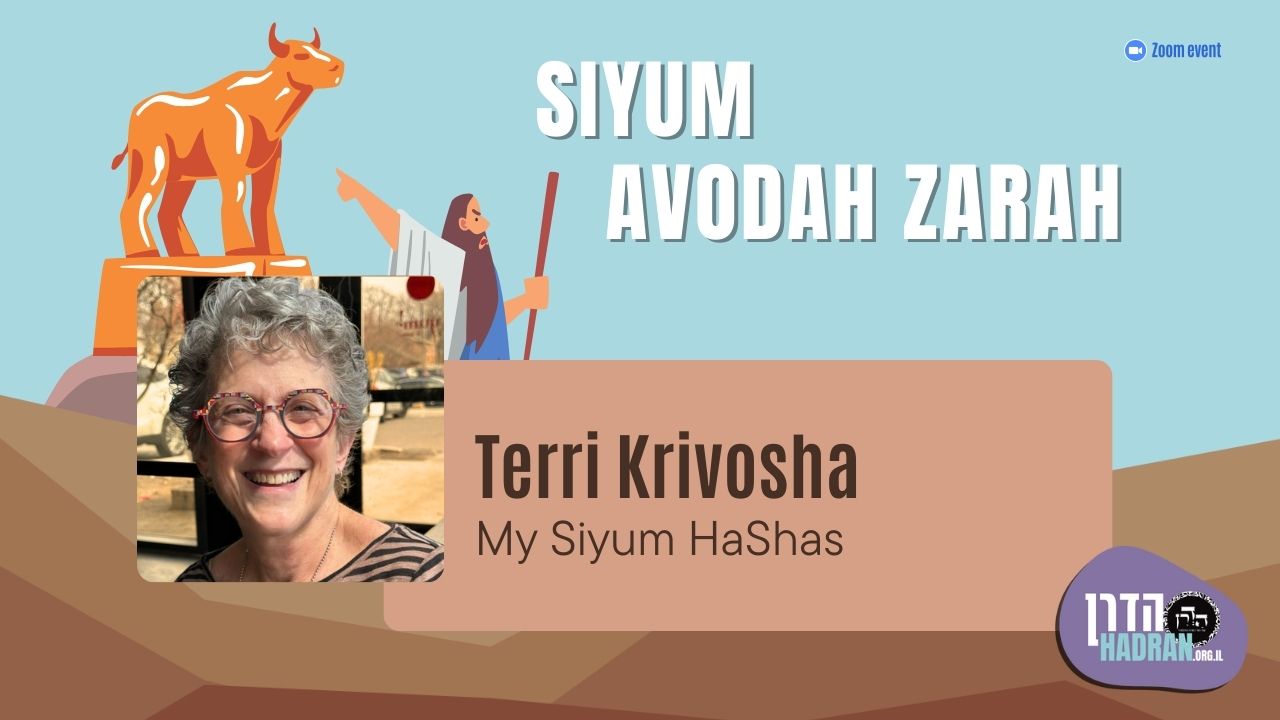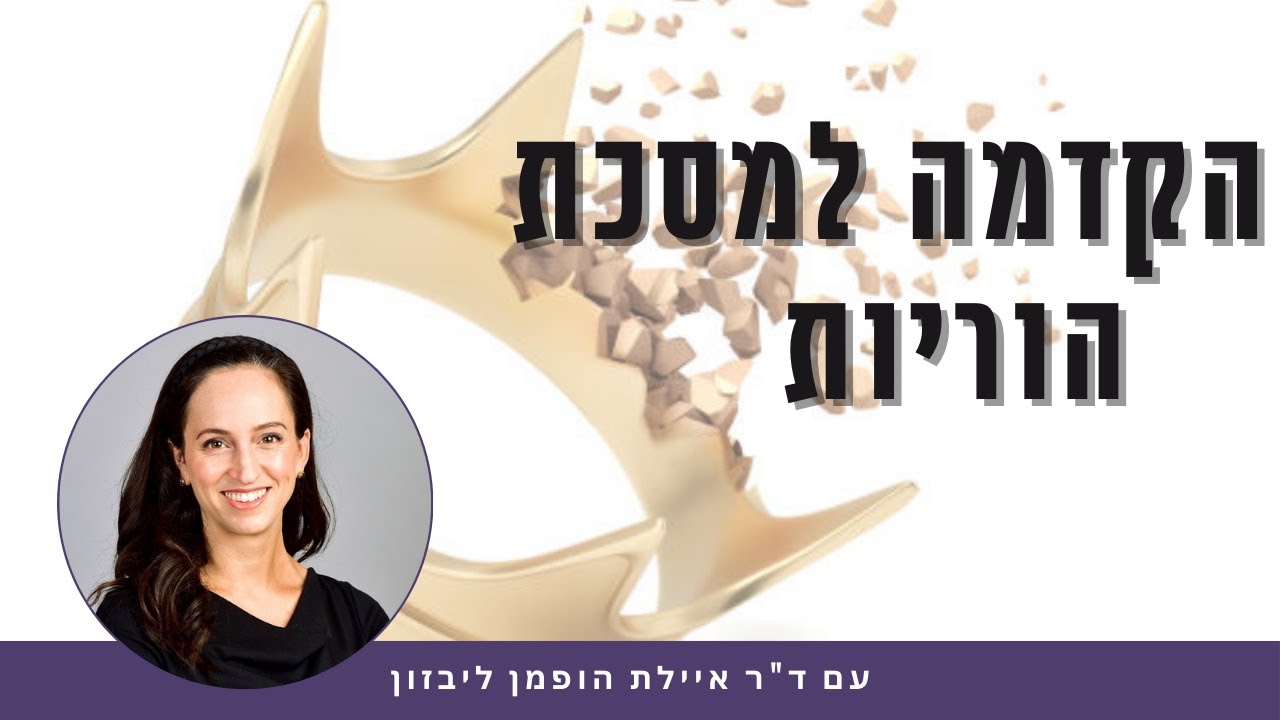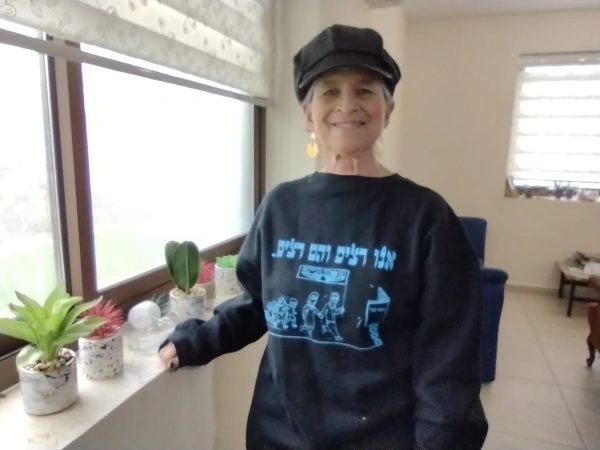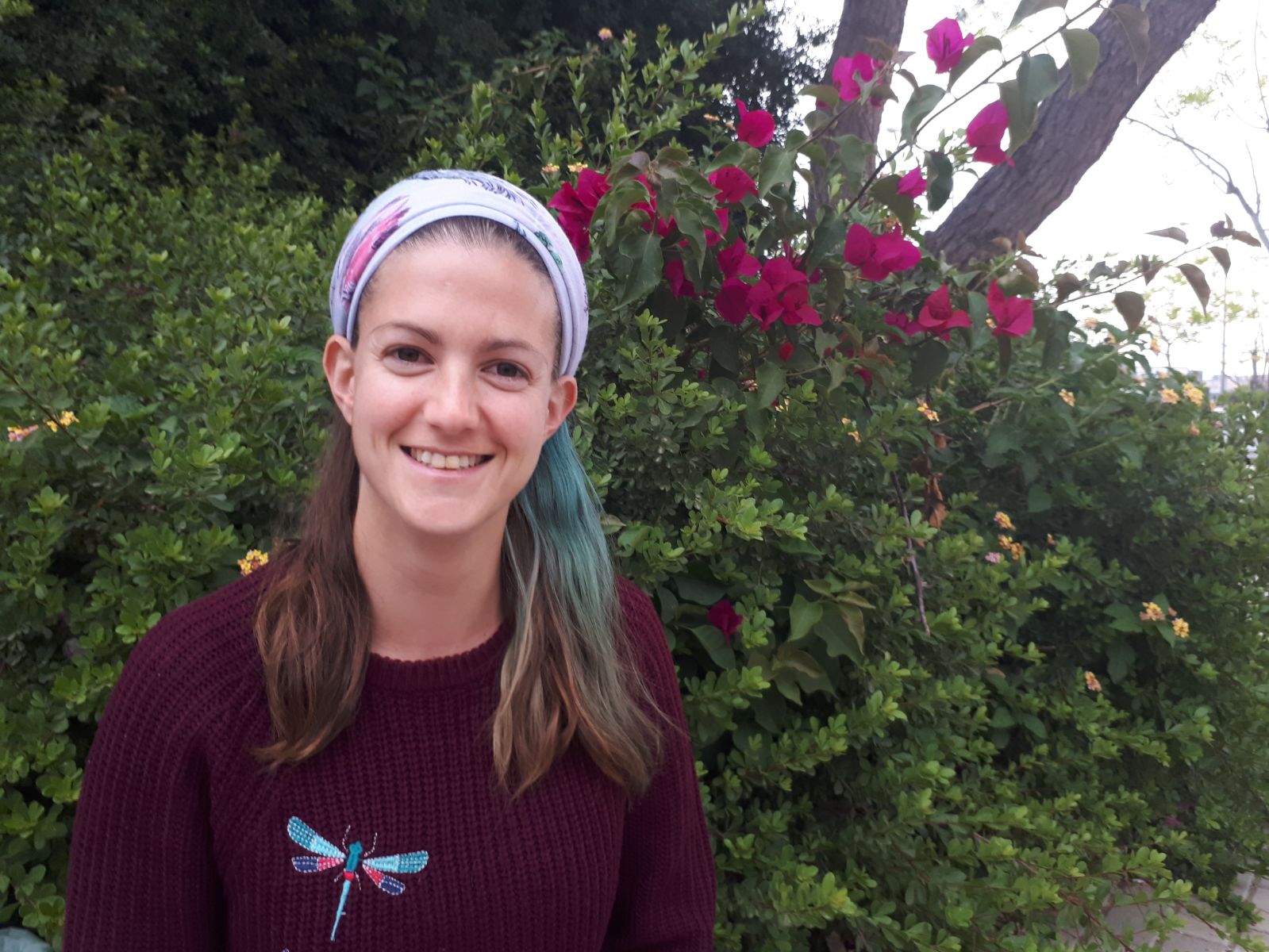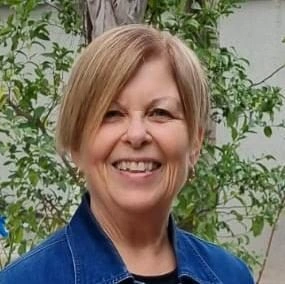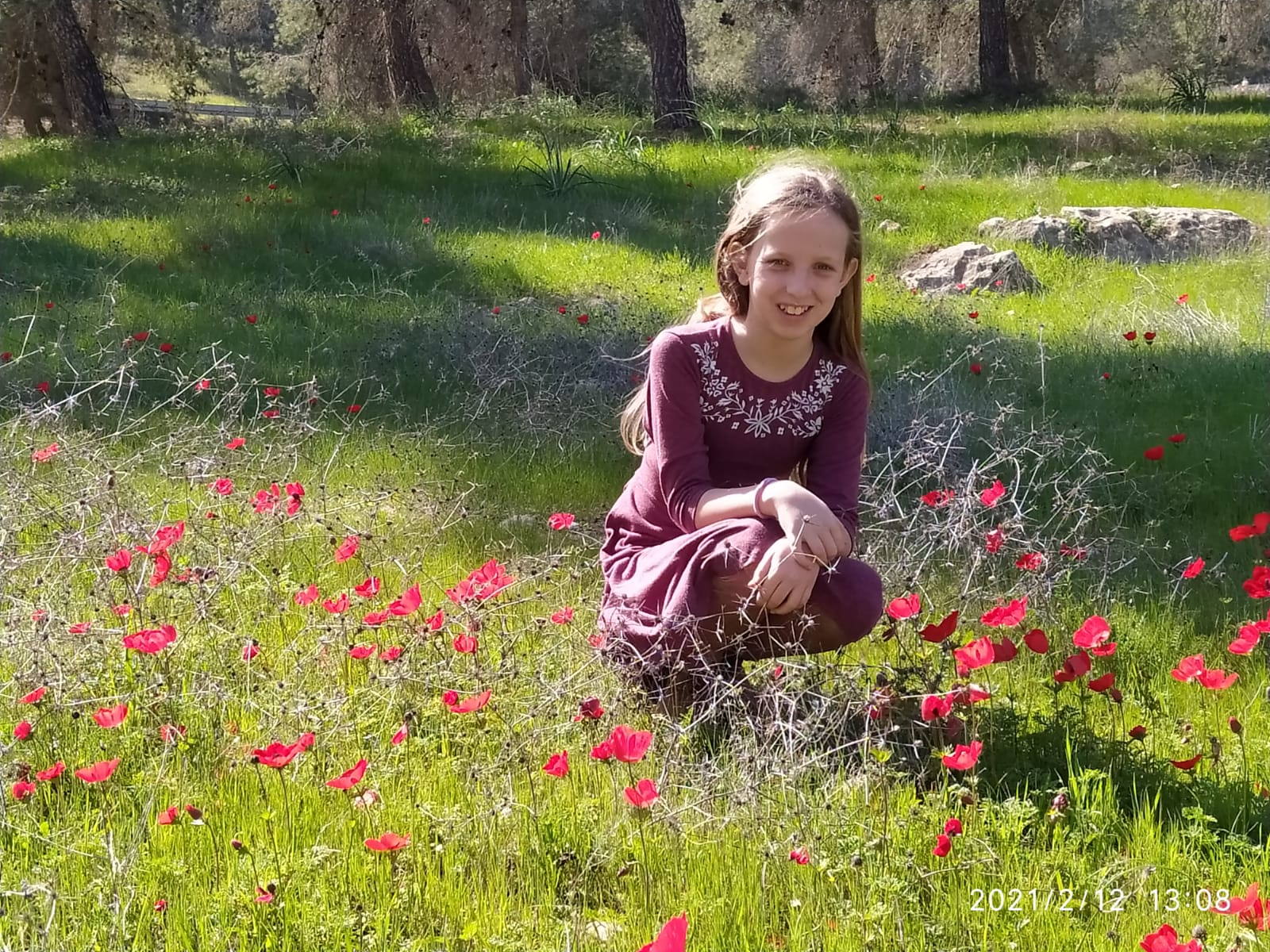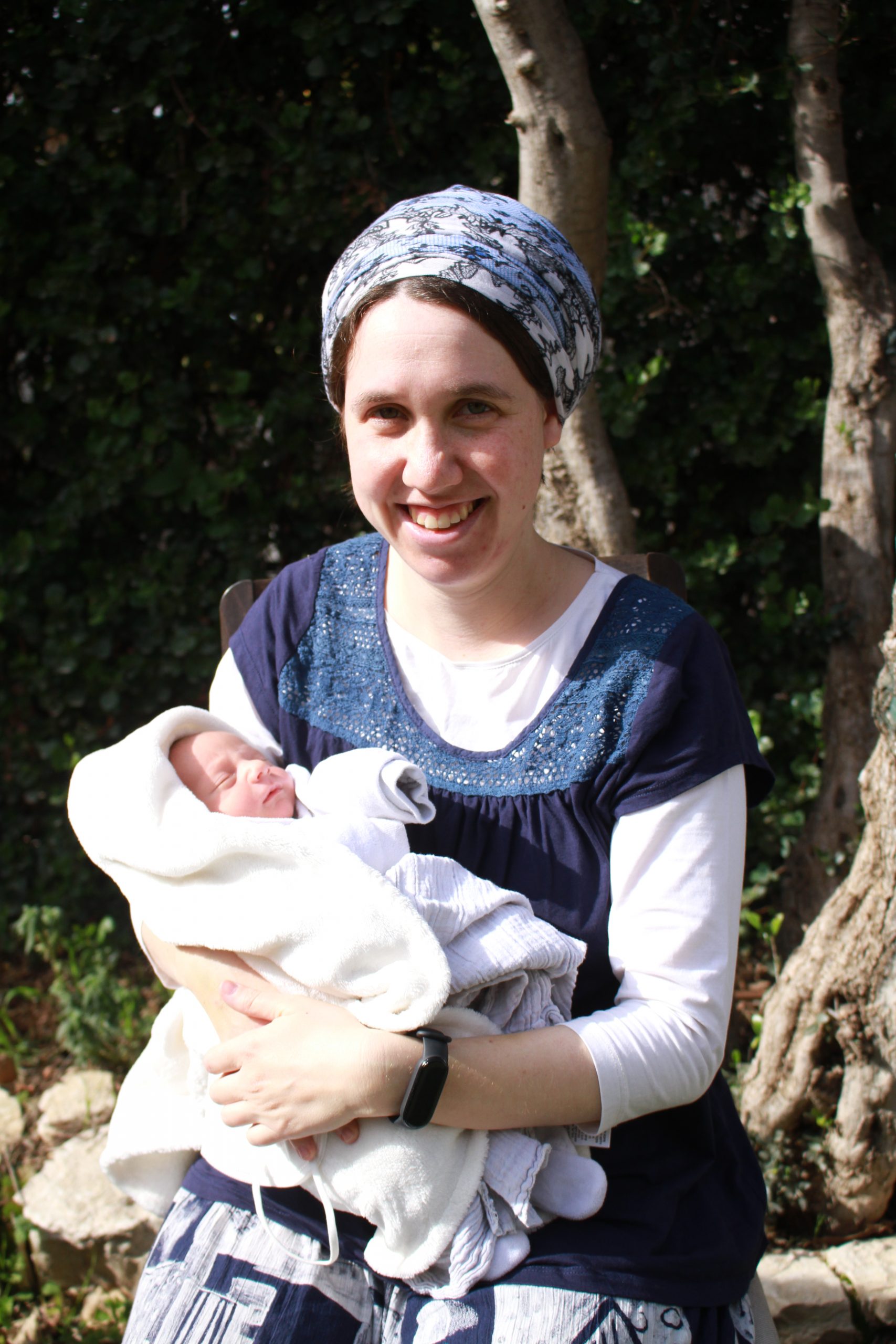עירובין עט
לֹא בִּיטְּלוֹ — לָא. אָמַר רַב הוּנָא: מַאן תָּנָא אֹהָלוֹת — רַבִּי יוֹסֵי הִיא.
However, if he did not nullify it, no, the house retains the status of a house, although it is filled with hay. Rav Huna said: Who is the tanna who taught tractate Oholot? It is Rabbi Yosei, and the tanna of the mishna does not accept his opinion.
אִי רַבִּי יוֹסֵי אִיפְּכָא שָׁמְעִינַן לֵיהּ. דְּתַנְיָא, רַבִּי יוֹסֵי אוֹמֵר: תֶּבֶן וְאֵין עָתִיד לְפַנּוֹתוֹ — הֲרֵי הוּא כִּסְתַם עָפָר, וּבָטֵל. עָפָר וְעָתִיד לְפַנּוֹתוֹ — הֲרֵי הוּא כִּסְתַם תֶּבֶן, וְלֹא בָּטֵיל.
The Gemara asks: If that mishna is in accordance with the opinion of Rabbi Yosei, there is a difficulty, since we heard him say the opposite, as it was taught in the Tosefta that Rabbi Yosei says: In a case where there is a house full of hay and the owner does not intend to remove, it is considered as though it were filled with indeterminate dirt, and it is therefore nullified. However, if the house was full of dirt that he intends to remove, it is considered as though it were filled with indeterminate hay, and it is therefore not nullified. Apparently, the decisive factor for Rabbi Yosei is not the specific material in the house, but whether or not the owner intends to remove it.
אֶלָּא אָמַר רַב אַסִּי: מַאן תְּנָא עֵירוּבִין — רַבִּי יוֹסֵי הִיא.
Rather, Rav Asi said: Who is the tanna who taught tractate Eiruvin? It is Rabbi Yosei, who does not accept the opinion of the tanna of tractate Oholot.
רַב הוּנָא בְּרֵיהּ דְּרַב יְהוֹשֻׁעַ אָמַר: טוּמְאָה אַשַּׁבָּת קָרָמֵית?! הַנַּח אִיסּוּר שַׁבָּת, דַּאֲפִילּוּ אַרְנְקִי נָמֵי מְבַטֵּל אִינִישׁ.
Rav Huna, son of Rav Yehoshua, said: Are you raising a contradiction between the halakhot of ritual impurity and the halakhot of Shabbat? These two areas of halakha cannot be compared. Leave aside the prohibition of Shabbat. With regard to Shabbat, a person nullifies even a pouch full of money. The pouch may not be moved on Shabbat and is therefore considered fixed in place. However, hay, which may be moved even on Shabbat, is not considered to be fixed in the ditch. With regard to ritual impurity, by contrast, the nullification must be permanent.
רַב אָשֵׁי אָמַר: בַּיִת אַחָרִיץ קָא רָמֵית?! בִּשְׁלָמָא חָרִיץ לְמִיטְיְימֵיהּ קָאֵי. אֶלָּא בַּיִת, לְמִיטְיְימֵיהּ קָאֵי?
Rav Ashi said: And are you raising a contradiction between the halakha that governs a house and that which governs a ditch? Granted in the case of a ditch, it typically stands to be permanently filled. As there is no doubt that one’s intention is to fill the ditch, the assumption is that anything placed inside a ditch will remain there. However, does a house stand to be permanently filled? Of course it does not. Presumably, the hay and dirt will be removed. Consequently, additional proof is necessary in order to conclude that the owner of the house intends to seal it permanently.
נָתַן עָלָיו נֶסֶר שֶׁרוֹחַב אַרְבָּעָה. אָמַר רָבָא: לֹא שָׁנוּ אֶלָּא שֶׁנָּתַן לְרׇחְבּוֹ, אֲבָל לְאׇרְכּוֹ — אֲפִילּוּ כָּל שֶׁהוּא נָמֵי, שֶׁהֲרֵי מִיעֲטוֹ מֵאַרְבָּעָה.
The mishna states: If one placed a plank that is four handbreadths wide across a ditch that separates two courtyards, the plank is considered an entrance. Rava said: They taught this halakha only in a case where one placed the plank along the width of the ditch. But if one positioned a plank along its length, even if the plank is of minimum width, it is also considered an entrance and reduces the ditch, as he reduced the opening to less than four handbreadths. The ditch was originally only four handbreadths wide. Therefore, if one places a plank of any width along its length, it becomes less than four handbreadths wide and no longer constitutes a partition.
וְכֵן שְׁתֵּי גְזוּזְטְרָאוֹת זוֹ כְּנֶגֶד זוֹ. אָמַר רָבָא: הָא דְּאָמְרַתְּ זוֹ כְּנֶגֶד זוֹ — אִין, זוֹ שֶׁלֹּא כְּנֶגֶד זוֹ — לֹא, וְזוֹ לְמַעְלָה מִזּוֹ נָמֵי, לָא אֲמַרַן אֶלָּא שֶׁיֵּשׁ בֵּין זֶה לָזֶה שְׁלֹשָׁה טְפָחִים, אֲבָל אֵין בֵּין זֶה לָזֶה שְׁלֹשָׁה — גְּזוּזְטְרָא עֲקוּמָּה הִיא.
The mishna continues: And similarly, if two balconies are opposite each other, and one placed a plank four handbreadths wide between them, the residents of the two courtyards may establish a single eiruv, as the plank is considered an entrance from one courtyard to the other. Rava said: That which you said: If the two balconies are opposite each other, yes, carrying between them is permitted by means of a plank; by inference, if they are not opposite each other, no, carrying is not permitted in this manner, and in a case where one balcony is above the other as well, it is prohibited, as it is not an entrance because it is too dangerous to walk from one to the other by means of the plank. We said the prohibition in these cases only where there is a disparity of at least three handbreadths between this balcony and that balcony. However, if there is a difference of less than three handbreadths between this balcony and that balcony, it is considered a single crooked balcony. Two balconies separated by a gap of less than three handbreadths are considered joined, based on the principle of lavud.
מַתְנִי׳ מַתְבֵּן שֶׁבֵּין שְׁתֵּי חֲצֵירוֹת גָּבוֹהַּ עֲשָׂרָה טְפָחִים — מְעָרְבִין שְׁנַיִם, וְאֵין מְעָרְבִין אֶחָד. אֵלּוּ מַאֲכִילִין מִכָּאן, וְאֵלּוּ מַאֲכִילִין מִכָּאן. נִתְמַעֵט הַתֶּבֶן מֵעֲשָׂרָה טְפָחִים, — מְעָרְבִין אֶחָד, וְאֵין מְעָרְבִין שְׁנַיִם.
MISHNA: With regard to a haystack that is positioned between two courtyards and is ten handbreadths high, it has the status of a partition, and therefore the residents of the courtyards may establish two eiruvin, and they may not establish one eiruv. These, the inhabitants of one courtyard, may feed their animals from here, from one side of the haystack, and those, the inhabitants of the other courtyard, may feed their animals from there, from the other side of the haystack. There is no concern that the haystack might become too small to serve as a partition. If the height of the hay was reduced to less than ten handbreadths across its entire length, its legal status is no longer that of a partition. Consequently, the residents of both courtyards establish one eiruv, and they do not establish two eiruvin.
גְּמָ׳ אָמַר רַב הוּנָא: וּבִלְבַד שֶׁלֹּא יִתֵּן לְתוֹךְ קוּפָּתוֹ וְיַאֲכִיל.
GEMARA: With regard to the mishna’s statement that the inhabitants of the two courtyards are permitted to place their animals next to the haystack and feed them, Rav Huna said: And this is the halakha provided that one does not actually put hay into his basket and feed his animals. In that case, there is concern that one might inadvertently reduce the height of the partition to less than ten handbreadths, which would constitute a breach between the courtyards and invalidate both eiruvin.
וּלְאוֹקֹמֵי שְׁרֵי? וְהָאָמַר רַב הוּנָא אָמַר רַבִּי חֲנִינָא: מַעֲמִיד אָדָם אֶת בְּהֶמְתּוֹ עַל גַּבֵּי עֲשָׂבִים בְּשַׁבָּת. וְאֵין מַעֲמִיד אָדָם אֶת בְּהֶמְתּוֹ עַל גַּבֵּי מוּקְצֶה בְּשַׁבָּת.
The Gemara asks: And if the actual handling of the hay is prohibited, is it permitted to stand one’s animal next to the haystack and let it eat? Didn’t Rav Huna say that Rabbi Ḥanina said: A person may stand his animal on a patch of grass on Shabbat, as he will certainly be careful not to pull out grass for the animal, due to the severity of the Torah prohibition involved. However, a person may not stand his animal on set-aside items on Shabbat. As the prohibition of set-aside is rabbinic in origin, he might forget and move the set-aside objects himself. The same reasoning should apply in the case of the haystack. If it is prohibited by rabbinic decree to remove hay from the stack manually, it should likewise be prohibited to position one’s animal alongside the stack.
דְּקָאֵים לַהּ בְּאַפַּהּ וְאָזְלָה וְאָכְלָה.
The Gemara answers: The mishna is not referring to a case where one directly brings the animal and places it alongside the haystack. Rather, it is dealing with a situation where one stands in front of the animal so that it cannot go elsewhere, and it goes and eats from the haystack of its own accord. In that case, the rabbinic decree does not apply.
וְלֹא יִתֵּן לְתוֹךְ קוּפָּתוֹ תֶּבֶן? וְהָתַנְיָא: בַּיִת שֶׁבֵּין שְׁתֵּי חֲצֵירוֹת וּמִילְּאָהוּ תֶּבֶן — מְעָרְבִין שְׁנַיִם וְאֵין מְעָרְבִין אֶחָד. זֶה נוֹתֵן לְתוֹךְ קוּפָּתוֹ וְיַאֲכִיל, וְזֶה נוֹתֵן לְתוֹךְ קוּפָּתוֹ וְיַאֲכִיל. נִתְמַעֵט הַתֶּבֶן מֵעֲשָׂרָה טְפָחִים — שְׁנֵיהֶם אֲסוּרִים.
The Gemara asks a question with regard to Rav Huna’s statement itself: And may one not put hay into his basket and feed his animal? Wasn’t it taught in a baraita: In the case of a house that is positioned between two courtyards and the residents filled it with hay, they establish two eiruvin, but they do not establish one eiruv, as the hay is considered a partition that divides the house. The resident of this courtyard puts hay into his basket and feeds his animal, and the resident of that courtyard puts hay into his basket and feeds his animal. If the hay was reduced to a height less than ten handbreadths, it is prohibited for residents of both to carry in their respective courtyards.
כֵּיצַד הוּא עוֹשֶׂה? נוֹעֵל אֶת בֵּיתוֹ וּמְבַטֵּל אֶת רְשׁוּתוֹ, הוּא אָסוּר וַחֲבֵירוֹ מוּתָּר.
How, then, does the resident of one of the courtyards act if he seeks to permit use of the other courtyard to its resident? He locks his house and renounces his right to carry in the courtyard in favor of the other person. Consequently, it is prohibited for him to carry from his house into the courtyard, and it is permitted for the other resident to do so.
וְכֵן אַתָּה אוֹמֵר בְּגוֹב שֶׁל תֶּבֶן שֶׁבֵּין שְׁנֵי תְּחוּמֵי שַׁבָּת. קָתָנֵי מִיהַת: זֶה נוֹתֵן לְתוֹךְ קוּפָּתוֹ וְיַאֲכִיל, וְזֶה נוֹתֵן לְתוֹךְ קוּפָּתוֹ וְיַאֲכִיל.
And you say likewise with regard to a pit [gov] of hay that is positioned between two Shabbat limits. The residents of each area may feed their animals from the common hay, as there is no concern lest the animals go beyond the limit. In any case, the baraita teaches: The resident of this courtyard puts hay into his basket and feeds his animal, and the resident of that courtyard puts hay into his basket and feeds his animal. This halakha poses a difficulty to Rav Huna’s opinion.
אָמְרִי: בַּיִת, כֵּיוָן דְּאִיכָּא (מְחִיצּוֹת וְ)תִּקְרָה, כִּי מִיפְּחִית — מִינַּכְרָא לֵיהּ מִלְּתָא. הָכָא — לָא מִינַּכְרָא לֵיהּ מִלְּתָא.
The Gemara answers: We can say that in the case of a house, since it has walls and a ceiling, when the height of the haystack is reduced the matter is conspicuous. The height disparity between the haystack and the ceiling is obvious. Consequently, when the haystack is reduced to less than ten handbreadths, people will stop carrying in the courtyard. Here, however, with regard to the hay in the pit, the difference in height is not conspicuous. The height of the hay in the pit could become diminished to the extent that the partition is nullified without anyone noticing.
נִתְמַעֵט הַתֶּבֶן מֵעֲשָׂרָה טְפָחִים שְׁנֵיהֶן אֲסוּרִין. הָא עֲשָׂרָה — שְׁרֵי, וְאַף עַל גַּב דְּמִידַּלְיָא תִּקְרָה טוּבָא. שְׁמַע מִינַּהּ: מְחִיצּוֹת שֶׁאֵין מַגִּיעוֹת לַתִּקְרָה — שְׁמָן מְחִיצּוֹת.
It is stated in the baraita: If the height of the hay was reduced to less than ten handbreadths it is prohibited to carry in both courtyards. The Gemara infers from the phrasing of the baraita: If the hay was at least ten handbreadths high, it is permitted to carry there, even though the ceiling is much higher than the hay. Conclude from it that the legal status of ten-handbreadth partitions that do not reach the ceiling is that of standard partitions, which was the subject of a dispute elsewhere. Apparently, this baraita proves that they have the status of partitions in all respects.
אָמַר אַבָּיֵי: הָכָא בְּבַיִת שְׁלֹשָׁה עָשָׂר חָסֵר מַשֶּׁהוּ עָסְקִינַן, וְתֶבֶן עֲשָׂרָה.
Abaye said: Here, we are dealing with the case of a house that is slightly less than thirteen handbreadths high and the hay is ten handbreadths high. The haystack is less than three handbreadths from the ceiling, and based on the principle of lavud, they are considered joined as though the partitions reach the ceiling.
וְרַב הוּנָא בְּרֵיהּ דְּרַב יְהוֹשֻׁעַ אָמַר: אֲפִילּוּ תֵּימָא בְּבֵית עֲשָׂרָה
And Rav Huna, son of Rav Yehoshua, said: Even if you say that the baraita is dealing with a house ten handbreadths high,
וְתֶבֶן שִׁבְעָה וּמַשֶּׁהוּ, דְּכׇל פָּחוֹת מִשְּׁלֹשָׁה כְּלָבוּד דָּמֵי.
and the hay in the house is slightly more than seven handbreadths high it is considered a full-fledged partition that reaches the ceiling, as objects separated by any gap of less than three handbreadths are considered joined, based on the principle of lavud.
בִּשְׁלָמָא לְאַבָּיֵי, הַיְינוּ דְּקָתָנֵי ״מֵעֲשָׂרָה״, אֶלָּא לְרַב הוּנָא בְּרֵיהּ דְּרַב יְהוֹשֻׁעַ מַאי ״מֵעֲשָׂרָה״?
The Gemara comments. Granted, according to the opinion of Abaye, that is why the baraita teaches: If the height of the haystack was reduced to less than ten handbreadths. However, according to Rav Huna, son of Rav Yehoshua, what is the meaning of: Less than ten? Even at the outset it was never as high as ten handbreadths.
מִתּוֹרַת עֲשָׂרָה.
The Gemara answers: It means that it was reduced to less than the law of ten handbreadths. As long as the hay is slightly more than seven handbreadths high, it is regarded as ten handbreadths high, in accordance with the principle of lavud. Once its height is reduced to less than seven handbreadths, the halakha of a partition ten handbreadths high is no longer in effect.
שְׁנֵיהֶן אֲסוּרִין. שְׁמַע מִינַּהּ דָּיוֹרִין הַבָּאִין בְּשַׁבָּת אֲסוּרִין?
The same baraita taught that if the height of the hay was reduced to less than ten handbreadths, it is prohibited to carry in both. The Gemara comments: Should we learn from this that residents who arrive on Shabbat prohibit the other residents from carrying? At the onset of Shabbat, both sets of residents were permitted to use the hay and the house, but once the hay was reduced on Shabbat it is as though new residents had been added to each of the courtyards, and it is prohibited for all of them to carry. Why not say that since at the beginning of Shabbat it was permitted to carry in the domain, they are permitted to do so for its duration?
דִּלְמָא דְּאִימְּעַט מֵאֶתְמוֹל.
The Gemara rejects this contention: Perhaps the baraita is referring to a case where the hay was already reduced on the previous day, before Shabbat began. In that case, it was never permitted to carry at all.
כֵּיצַד הוּא עוֹשֶׂה? נוֹעֵל אֶת בֵּיתוֹ וּמְבַטֵּל רְשׁוּתוֹ. תַּרְתֵּי?! הָכִי קָאָמַר: אוֹ נוֹעֵל אֶת בֵּיתוֹ אוֹ מְבַטֵּל אֶת רְשׁוּתוֹ.
The baraita continues: How, then, does the resident of one of the courtyards act if he seeks to permit use of the other courtyard to its resident? He locks his house and renounces his right to carry in the courtyard in favor of the other person. The Gemara is surprised by this ruling: Does he require these two steps? One should suffice. The Gemara answers: This is what the tanna of the baraita is saying: Either he locks his house or he renounces his right to the courtyard.
וְאִיבָּעֵית אֵימָא: לְעוֹלָם תַּרְתֵּי, כֵּיוָן דְּדָשׁ בֵּיהּ — אָתֵי לְטַלְטוֹלֵי.
And if you wish, say a different explanation instead. Actually, both actions are required in this case, even though one of them would ordinarily suffice. The reason is: Since he is accustomed to using the courtyard, he will come to carry. Consequently, the Sages were stringent with a person in this position and obligated him to implement an additional change so that he will not forget and come to carry when it is prohibited.
הוּא אָסוּר וַחֲבֵירוֹ מוּתָּר. פְּשִׁיטָא? לָא צְרִיכָא, דַּהֲדַר אִידַּךְ וּבַטֵּיל לֵיהּ לְחַבְרֵיהּ, וְהָא קָא מַשְׁמַע לַן: דְּאֵין מְבַטְּלִין וְחוֹזְרִין וּמְבַטְּלִין.
It was taught in the baraita: If one locks his house and renounces his rights to the courtyard, it is prohibited for him to carry, and it is permitted for the other person to carry. The Gemara raises a difficulty: Isn’t this obvious? Why was it necessary to state this halakha? The Gemara answers: It was necessary only in a case where the other person then renounced his right in favor of the first person. And the baraita teaches us that one may not renounce his rights in favor of the other, and then have the latter renounce his own rights in favor of the former.
וְכֵן אַתָּה אוֹמֵר בְּגוֹב שֶׁל תֶּבֶן שֶׁבֵּין שְׁנֵי תְּחוּמֵי שַׁבָּת. פְּשִׁיטָא! לָא צְרִיכָא לְרַבִּי עֲקִיבָא דְּאָמַר: תְּחוּמִין דְּאוֹרָיְיתָא, מַהוּ דְּתֵימָא: לִיגְזוֹר דִּלְמָא אָתֵי לְאִיחַלּוֹפֵי, קָא מַשְׁמַע לַן.
It was further taught in the baraita: And you can say likewise with regard to a pit of hay that is situated between two Shabbat limits. The inhabitants of each area may feed their animals from the common hay. The Gemara raises a difficulty: Isn’t this obvious? The same principle that is in effect with regard to a haystack between courtyards should apply here as well. The Gemara answers: It was necessary to state this halakha only according to the opinion of Rabbi Akiva, who said that the principle of Shabbat boundaries is by Torah law. Lest you say that let us issue a decree and prohibit it, lest people come to exchange objects from one boundary to another, which would violate a Torah prohibition; therefore, the baraita teaches us that no distinction is made between the cases, and no decree of this kind is issued.
מַתְנִי׳ כֵּיצַד מִשְׁתַּתְּפִין בְּמָבוֹי? מַנִּיחַ אֶת הֶחָבִית, וְאוֹמֵר: הֲרֵי זוֹ לְכׇל בְּנֵי מָבוֹי, וּמְזַכֶּה לָהֶן עַל יְדֵי בְּנוֹ וּבִתּוֹ הַגְּדוֹלִים, וְעַל יְדֵי עַבְדּוֹ וְשִׁפְחָתוֹ הָעִבְרִים, וְעַל יְדֵי אִשְׁתּוֹ.
MISHNA: How does one merge the courtyards that open into the alleyway, if a person wishes to act on behalf of all the residents of the alleyway? He places a barrel filled with his own food and says: This is for all the residents of the alleyway. For this gift to be acquired by the others, someone must accept it on their behalf, and the tanna therefore teaches that he may confer possession to them even by means of his adult son or daughter, and likewise by means of his Hebrew slave or maidservant, whom he does not own, and by means of his wife. These people may acquire the eiruv on behalf of all the residents of the alleyway.
אֲבָל אֵינוֹ מְזַכֶּה לֹא עַל יְדֵי בְּנוֹ וּבִתּוֹ הַקְּטַנִּים, וְלֹא עַל יְדֵי עַבְדּוֹ וְשִׁפְחָתוֹ הַכְּנַעֲנִים, מִפְּנֵי שֶׁיָּדָן כְּיָדוֹ.
However, he may not confer possession by means of his minor son or daughter, nor by means of his Canaanite slave or maidservant, because they cannot effect acquisition, as ownership of objects that come into their possession is as if those objects came into his possession. Consequently, the master or father cannot confer possession to the slave or minor respectively on behalf of others as their acquisition is ineffective and the object remains in his own possession.
גְּמָ׳ אָמַר רַב יְהוּדָה: חָבִית שֶׁל שִׁיתּוּפֵי מְבוֹאוֹת צָרִיךְ לְהַגְבִּיהַּ מִן הַקַּרְקַע טֶפַח.
GEMARA: Rav Yehuda said: With regard to a barrel for the merging of alleyways, the one acquiring it on behalf of the alleyway’s residents must raise it a handbreadth from the ground, as he must perform a valid act of acquisition on their behalf.
אָמַר רָבָא: הָנֵי תַּרְתֵּי מִילֵּי, סָבֵי דְפוּמְבְּדִיתָא אַמְרִינְהוּ: חֲדָא — הָא. אִידַּךְ — הַמְקַדֵּשׁ, אִם טָעַם מְלֹא לוּגְמָיו — יָצָא, וְאִם לָאו — לֹא יָצָא.
Rava said: The elders of Pumbedita, Rav Yehuda and his students, stated these two matters. One was this mentioned above with regard to lifting the barrel; and the other was: With regard to one who recites kiddush over wine on Shabbat or a Festival, if he tasted a mouthful of wine, he fulfilled his obligation; however, if he did not taste a mouthful, he did not fulfill his obligation.
אָמַר רַב חֲבִיבָא: הָא נָמֵי סָבֵי דְפוּמְבְּדִיתָא אַמְרִינְהוּ, דְּאָמַר רַב יְהוּדָה אָמַר שְׁמוּאֵל: עוֹשִׂין מְדוּרָה לַחַיָּה בְּשַׁבָּת.
Rav Ḥaviva said: In addition to the aforementioned pair of teachings, the elders of Pumbedita stated this too, as Rav Yehuda said that Shmuel said: One builds a fire for a woman in childbirth on Shabbat.
סְבוּר מִינָּה: לְחַיָּה — אִין, לְחוֹלֶה — לָא. בִּימוֹת הַגְּשָׁמִים — אִין, בִּימוֹת הַחַמָּה — לָא.
The Gemara comments that the Sages thought to infer from here: For a woman in childbirth, yes, one builds a fire, due to her highly precarious state; for a sick person, no, one does not build a fire. Likewise, in the rainy season, when the danger of catching cold is ever present, yes, one builds a fire; in the summer, no, one may not.
אִיתְּמַר, אָמַר רַב חִיָּיא בַּר אָבִין אָמַר שְׁמוּאֵל: הִקִּיז דָּם וְנִצְטַנֵּן — עוֹשִׂין לוֹ מְדוּרָה בְּשַׁבָּת, וַאֲפִילּוּ בִּתְקוּפַת תַּמּוּז.
The Gemara adds that which was stated: Rav Ḥiyya bar Avin said that Shmuel said: With regard to one who let blood and caught cold, one builds a fire for him on Shabbat, even during the season of Tammuz, i.e., the summer. Clearly, Rav Yehuda’s ruling is limited neither to a woman in childbirth nor to the rainy season.
אָמַר אַמֵּימָר: הָא נָמֵי סָבֵי דְפוּמְבְּדִיתָא אַמְרִינְהוּ, דְּאִיתְּמַר: אֵיזוֹ הִיא אֲשֵׁירָה סְתָם?
Ameimar said: This too was stated by the elders of Pumbedita, as it was stated that the amora’im disagreed with regard to which tree is presumed to be a tree designated for idolatry [asheira], even though no one actually saw it worshipped.
אָמַר רַב: כׇּל שֶׁכּוֹמָרִין שׁוֹמְרִין אוֹתָהּ
Rav said: It is any tree that idolatrous priests guard.

